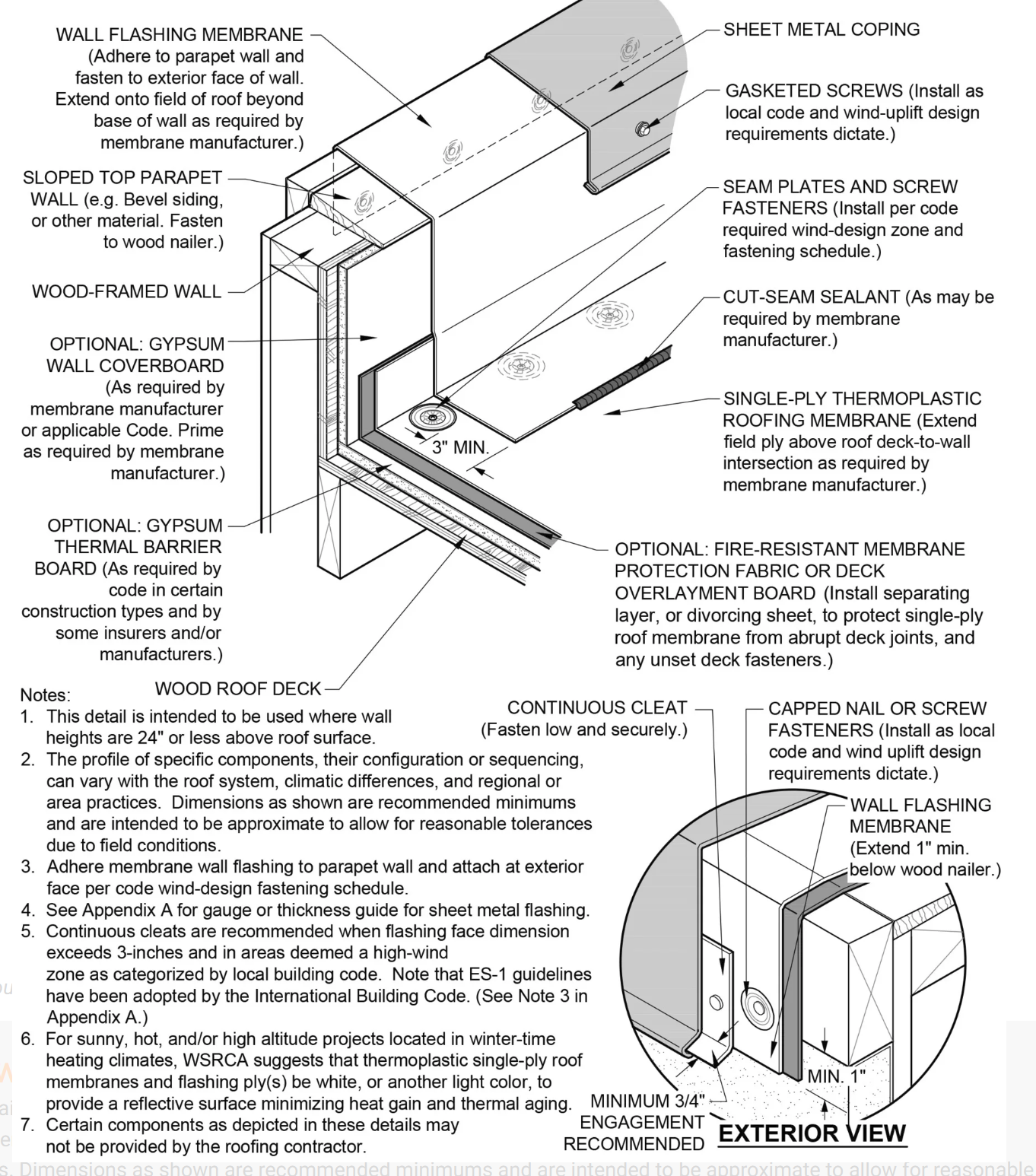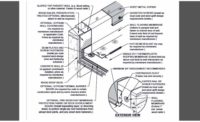This detail is intended to be used where wall heights are 24 inches or less above roof surface. The profile of specific components, their configuration or sequencing, can vary with the roof system, climatic differences, and regional or area practices. Dimensions as shown are recommended minimums and are intended to be approximate to allow for reasonable tolerances due to field conditions. Adhere membrane wall flashing to parapet wall and attach at exterior face per code wind-design fastening schedule.
Continuous cleats are recommended when flashing face dimension exceeds 3 inches and in areas deemed a high-wind zone as categorized by local building code. Note that ES-1 guidelines have been adopted by the International Building Code.
For sunny, hot, and/or high altitude projects located in winter-time heating climates, WSRCA suggests that thermoplastic single-ply roof membranes and flashing ply(s) be white, or another light color, to code and wind uplift design requirements dictate. Certain components as depicted in these details may not be provided by the roofing contractor.


